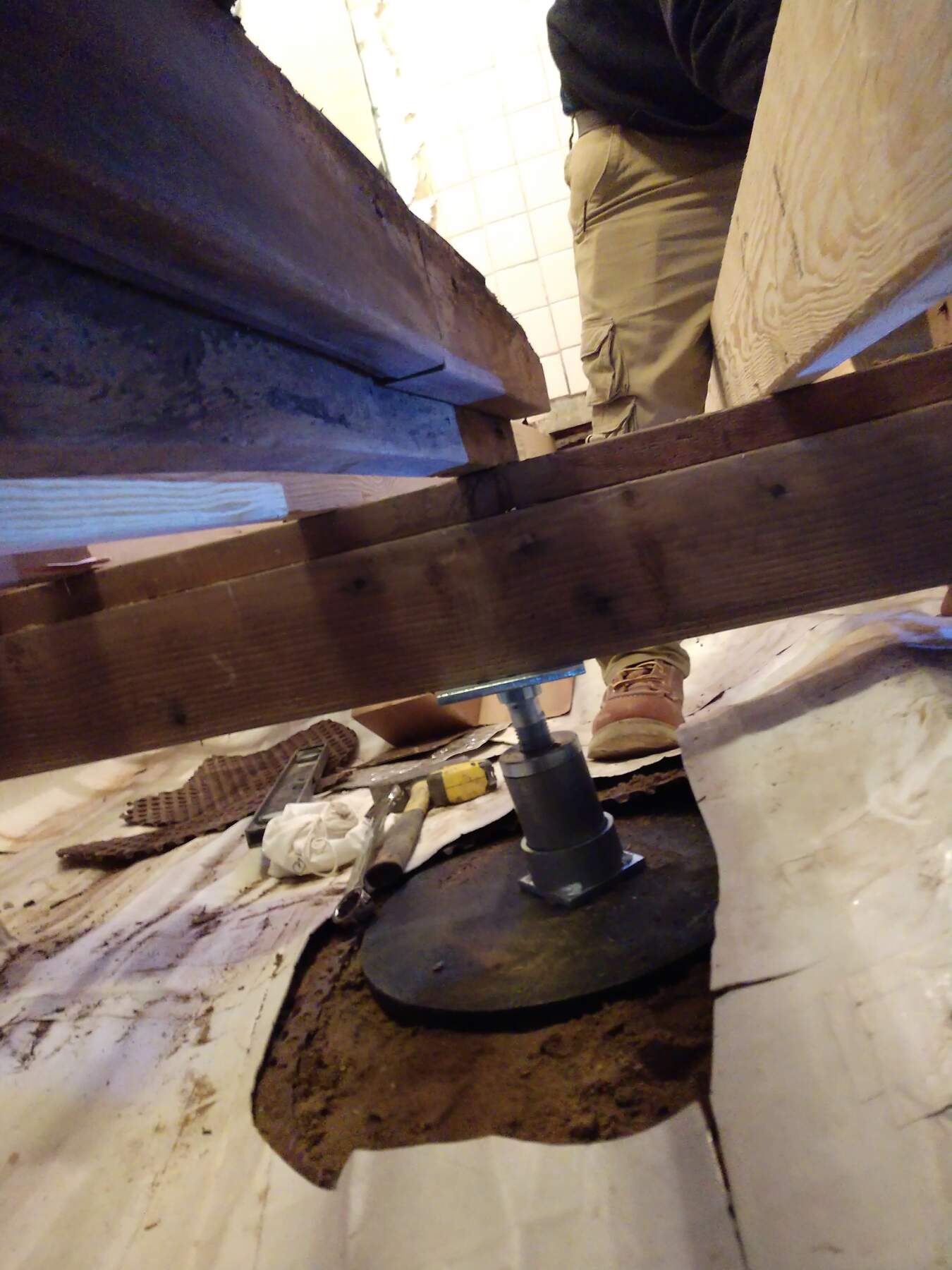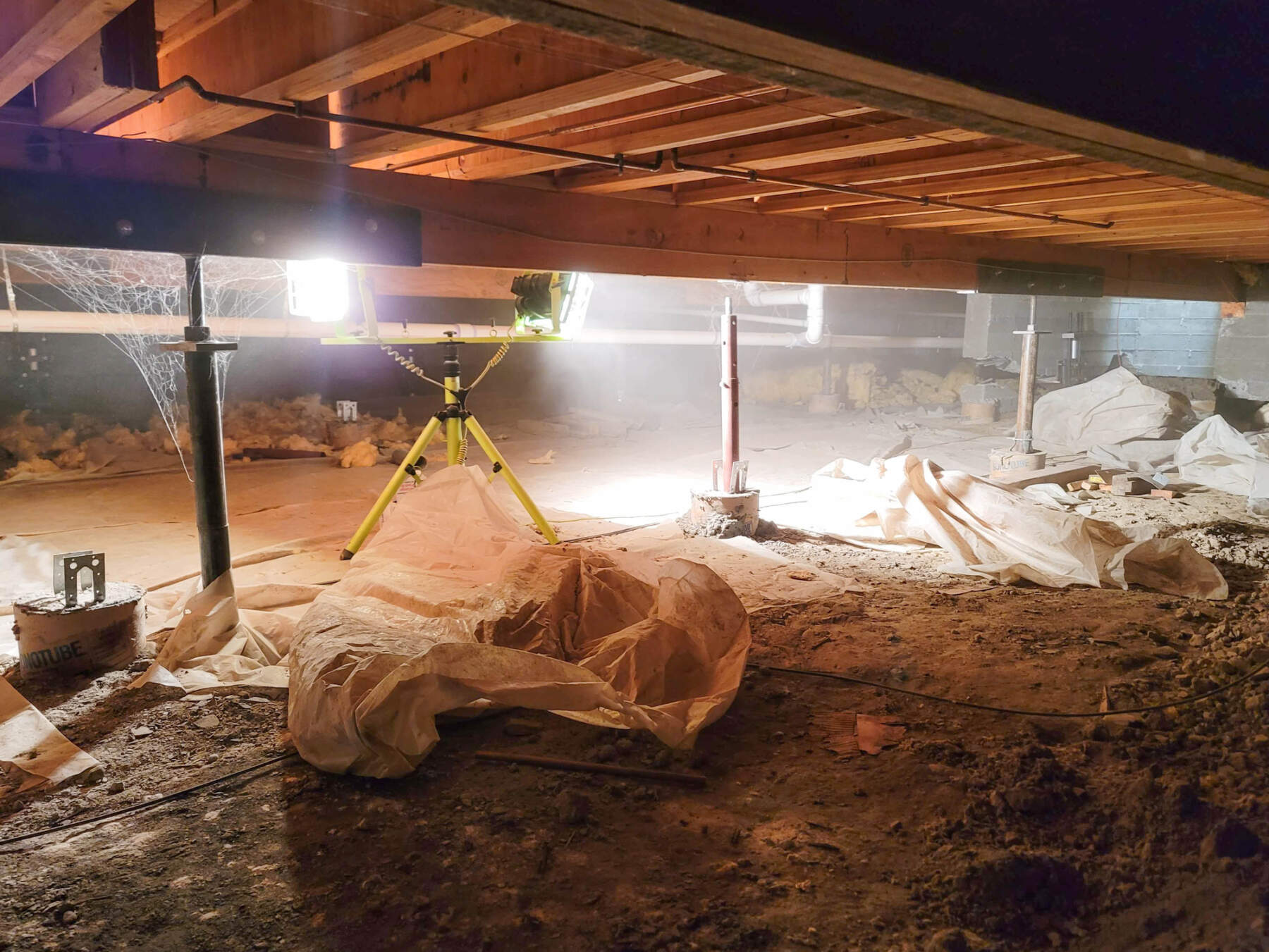


That Sinking Feeling Isn’t in Your Head
You’re not imagining it. When the floor feels soft, slants to one side, or dips in the middle, something serious is happening under your feet. And it’s not just inconvenient—it’s a structural warning sign.
Whether it’s a single room or your entire first floor, sagging floors often point to weakened supports, shifting soil, or a failing foundation. That kind of damage doesn’t go away on its own. It spreads. Quietly, steadily, and expensively.
But here’s the good news: you caught it in time. And we’re here to fix it right.


Why Floors Sag—and Why You Can’t Ignore It
In most Michigan homes, especially older ones, floors rely on a system of beams and joists that sit on crawl space or foundation supports. Over time, these supports can sink, rot, or shift due to:
Ignoring the issue can lead to bigger (and costlier) problems: cracked drywall, jammed doors, uneven cabinetry—even plumbing damage.
“Sagging floors aren’t cosmetic. They’re structural. Treating them like surface problems is like painting over a leak.”
